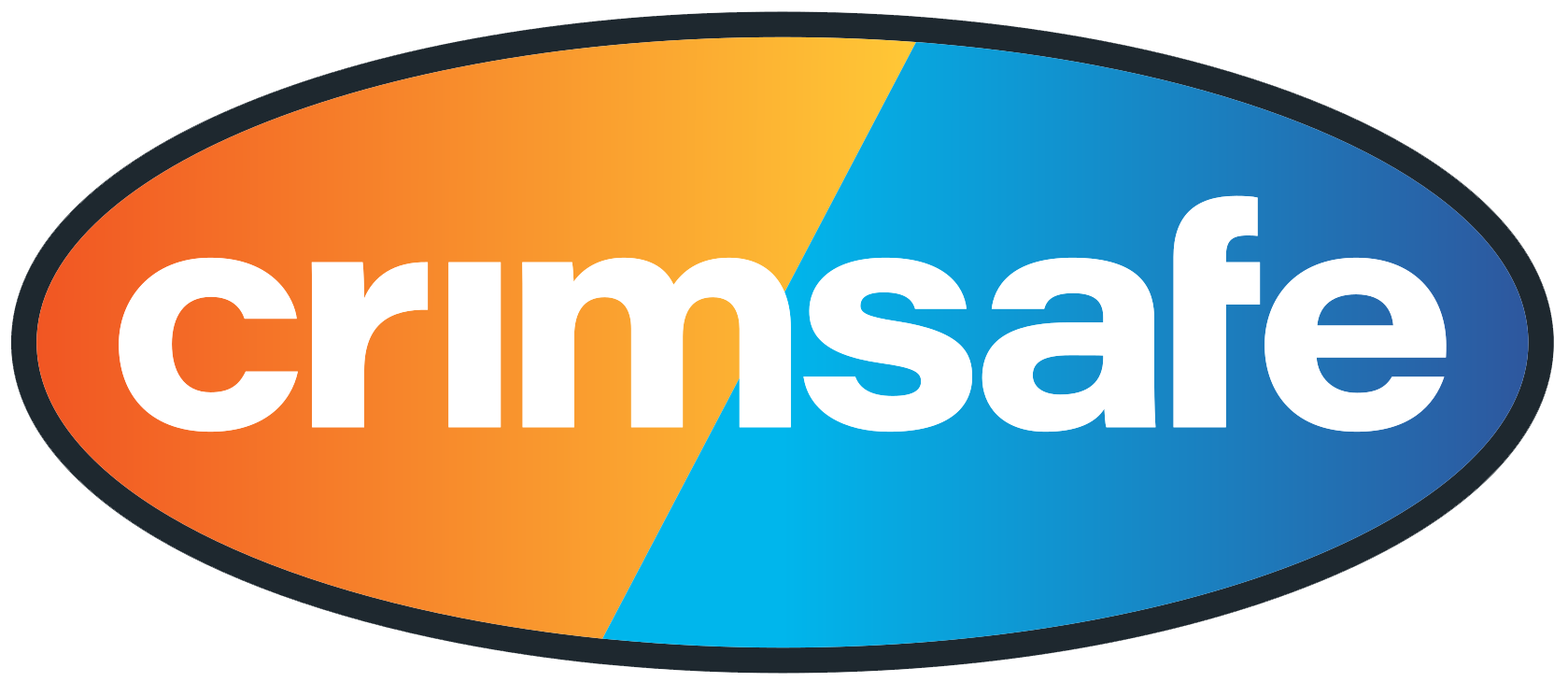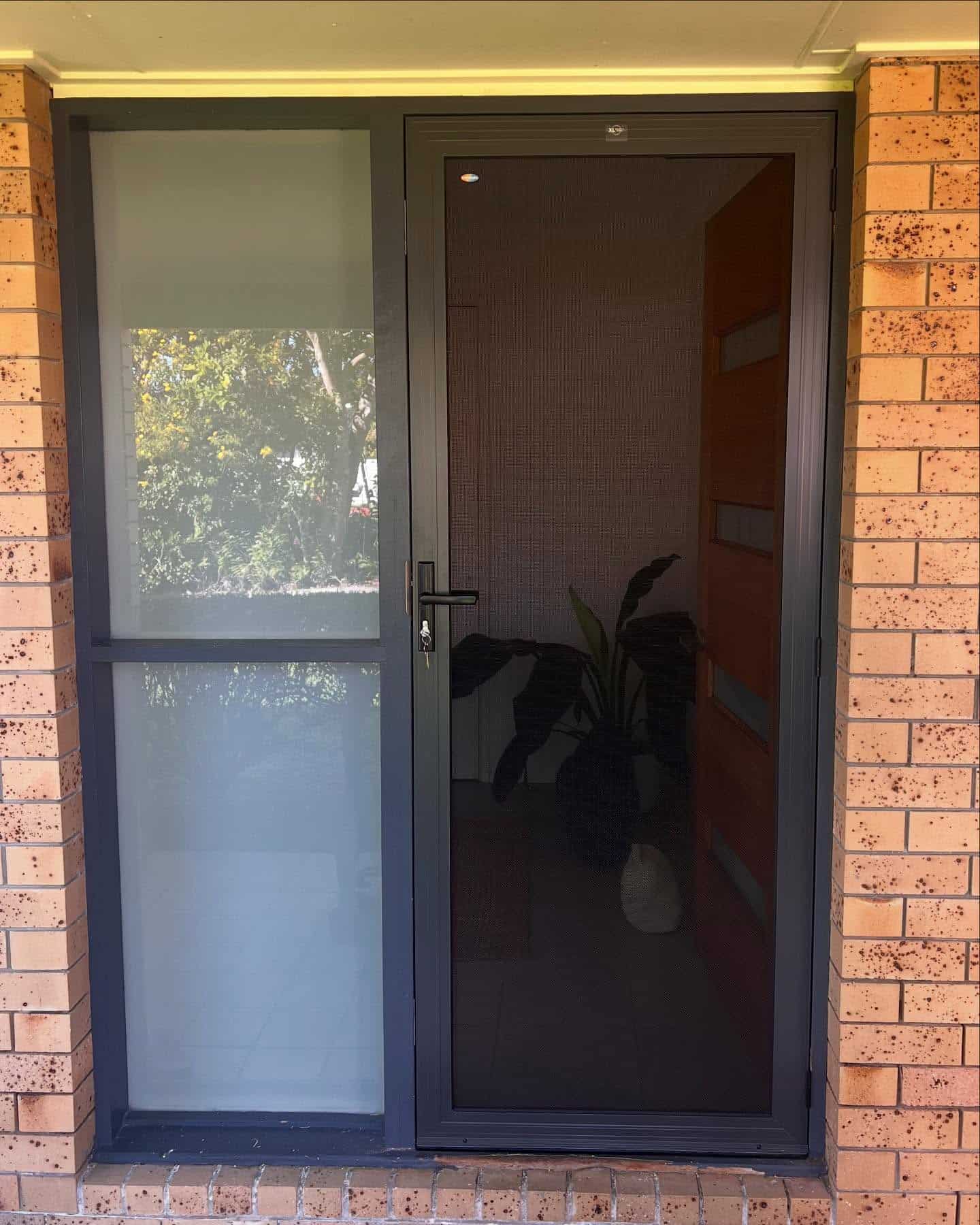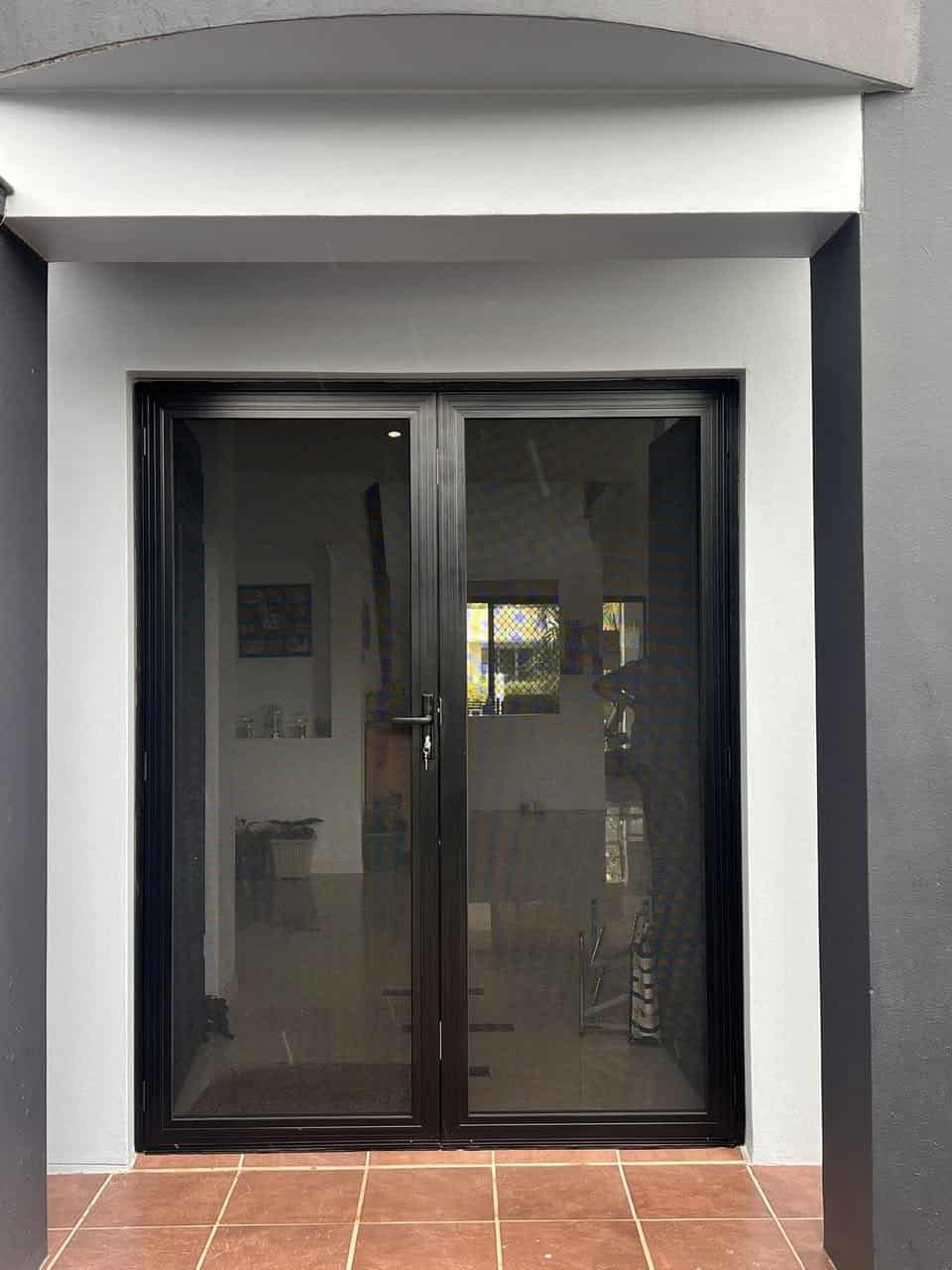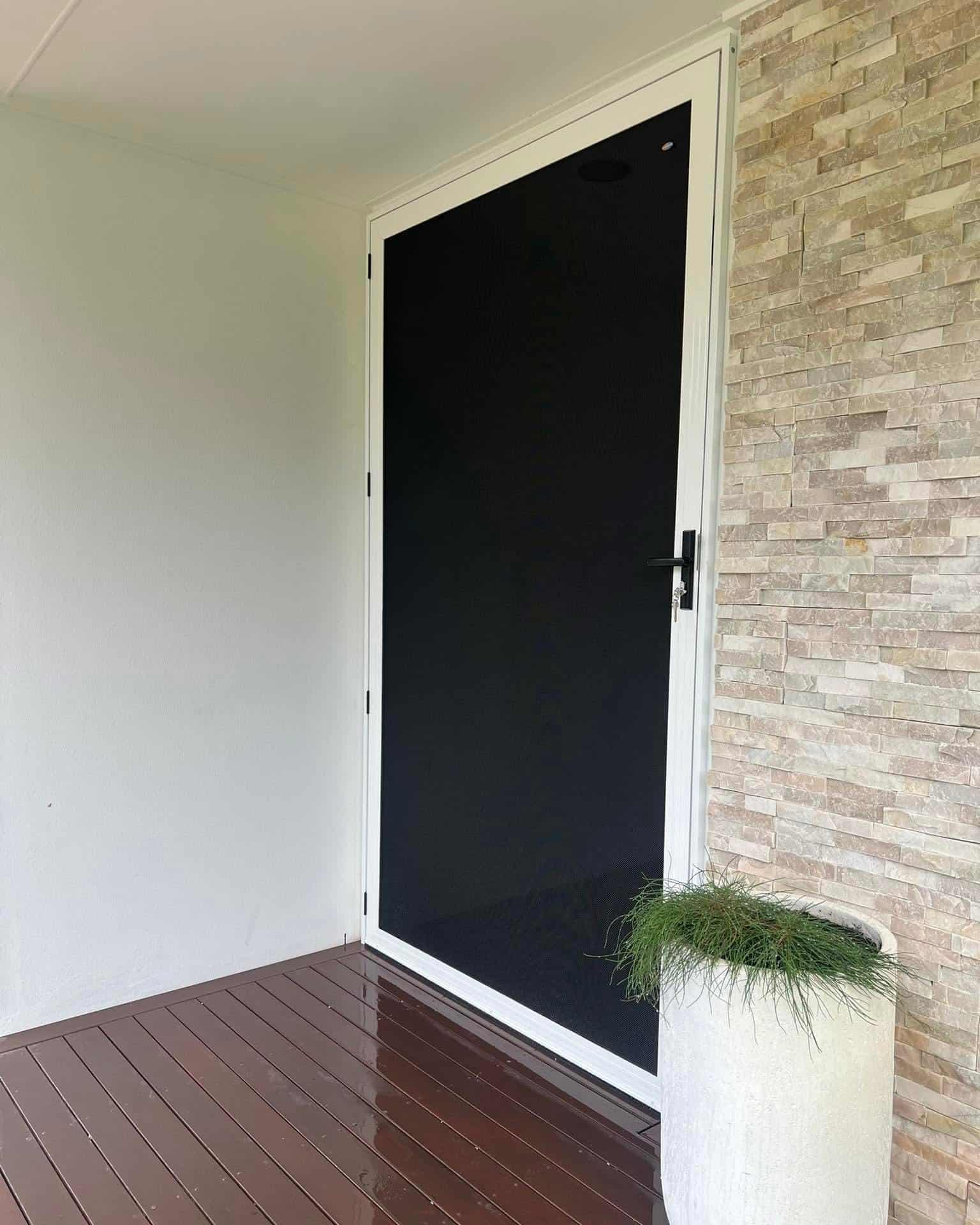Regular Security Screen Maintenance is Important
Maintaining a home’s appearance is a common priority. But have you considered the costs of neglecting your security screens? Curb appeal is important, yet regular security screen maintenance is vital for several reasons, directly impacting your home’s protection and value. It’s not just about aesthetics; it’s about preserving the core functionality of your security investment.
For instance, accumulated dirt and grime can reduce visibility. This not only compromises your view but also creates a security risk. Intruders can approach undetected under the cover of obscured sightlines. Furthermore, debris build-up can accelerate the degradation of the screen material, especially in harsh climates.
This means neglecting cleaning can shorten the lifespan of your screens, leading to early replacements. Therefore, regular cleaning becomes a cost-effective measure in the long run.
The importance of clean security screens is often overlooked. Maintaining their cleanliness is crucial for both appearance and function. In Australia, particularly in regions like the Gold Coast, security screens typically need cleaning every six months if located more than 10 km from saltwater. However, within 1 km of saltwater, monthly cleaning is recommended due to the corrosive effects of salt and moisture.
This regular cleaning enhances visibility and prevents degradation. Proper cleaning involves warm water and mild dish soap, gently scrubbing both sides with a soft brush, and rinsing thoroughly. Regular maintenance extends the screens’ lifespan, ensuring they remain effective barriers against the elements and intruders. Learn more about cleaning schedules here: Cleaning Security Screens
Recognising the Warning Signs
How can you tell if your security screens need attention? Several indicators signal the need for cleaning.
- Visible build-up of dirt, grime, or salt deposits
- Difficulty seeing clearly through the mesh
- Signs of corrosion or rust, particularly on metal screens
Even without these signs, regular maintenance is key. Proactive cleaning, specific to your environment, prevents these issues from developing.
Protecting Your Investment
Consistent care delivers long-term returns. By investing a small amount of time in regular cleaning, you protect your larger investment in the screens. Learn more about effective cleaning methods: How to Clean Security Screens Effectively
This proactive approach maintains effectiveness and contributes to your home’s overall security and value. Regular maintenance ensures your security screens remain a robust and reliable safeguard for years to come.
The Cleaning Tools That Make A Difference
Choosing the right cleaning supplies is crucial for effective security screen maintenance. It’s not just about appearances; it’s about preserving the screen’s integrity and extending its lifespan. Understanding which cleaning solutions and tools are best suited for different screen materials is key. Using the wrong products can lead to corrosion, discoloration, or even structural damage, impacting your investment. Let’s explore the essential tools professionals use to maintain security screens safely and effectively.
Essential Cleaning Solutions
Different screen materials react differently to various cleaning solutions. Aluminum, stainless steel, and fiberglass each have their own sensitivities. While a homemade solution of mild dish soap and water is generally safe and effective for most screens, commercial cleaners offer specialized benefits. For instance, some commercial cleaners are formulated to tackle stubborn grime and salt deposits, particularly useful in coastal environments. However, be mindful of harsh chemicals in some commercial cleaners that can damage certain screen materials.
For environmentally conscious homeowners, eco-friendly cleaning solutions are readily available. These cleaners utilize plant-based ingredients for effective cleaning without harsh chemicals. This reflects a growing trend toward sustainability in the cleaning industry.
To help clarify the best options for your specific security screen type, we’ve compiled a comparison table below:
Recommended Cleaning Supplies for Security Screens
Comparison of essential tools and cleaning solutions for different security screen types
| Cleaning Supply | Best Used For | Avoid Using On | Environmental Impact |
|---|---|---|---|
| Mild Dish Soap and Water | Most screen types, general cleaning | N/A | Low |
| Commercial Cleaners (Specialized for Salt Deposits) | Coastal areas, heavy grime | Test on inconspicuous area first | Moderate (check product specifics) |
| Plant-Based Cleaners | General cleaning, environmentally conscious choice | Test on inconspicuous area first | Low |
| White Vinegar Solution (Diluted) | Mild mildew removal | Aluminium screens | Low |
This table provides a quick overview of appropriate cleaning supplies and highlights the importance of choosing products suited to your specific screen material. Always test a new cleaner on a small, inconspicuous area of the screen first to ensure compatibility.
The Right Tools for the Job
The tools you use are just as important as the cleaning solution itself. Soft-bristled brushes are ideal for gentle cleaning without scratching. For tougher grime, a slightly stiffer brush might be necessary. However, avoid abrasive materials like steel wool, which can scratch and damage the protective coating.
Material-Specific Considerations
Different materials require different cleaning approaches. Aluminium screens, for example, are susceptible to oxidation, making an aluminum-specific cleaner essential. While stainless steel is more resistant to corrosion, specialised stainless steel cleaners maintain its shine and prevent streaking.
Maintaining Your Cleaning Equipment
Proper care of your cleaning tools ensures their longevity and effectiveness. Rinse brushes thoroughly after each use to remove any residue, and allow them to air dry completely to prevent mildew. Proper storage extends the lifespan of your cleaning supplies, saving you money in the long run. This comprehensive approach preserves both the functionality and appearance of your security screens for years to come.
The Definitive Screen Cleaning Process: From Start to Shine
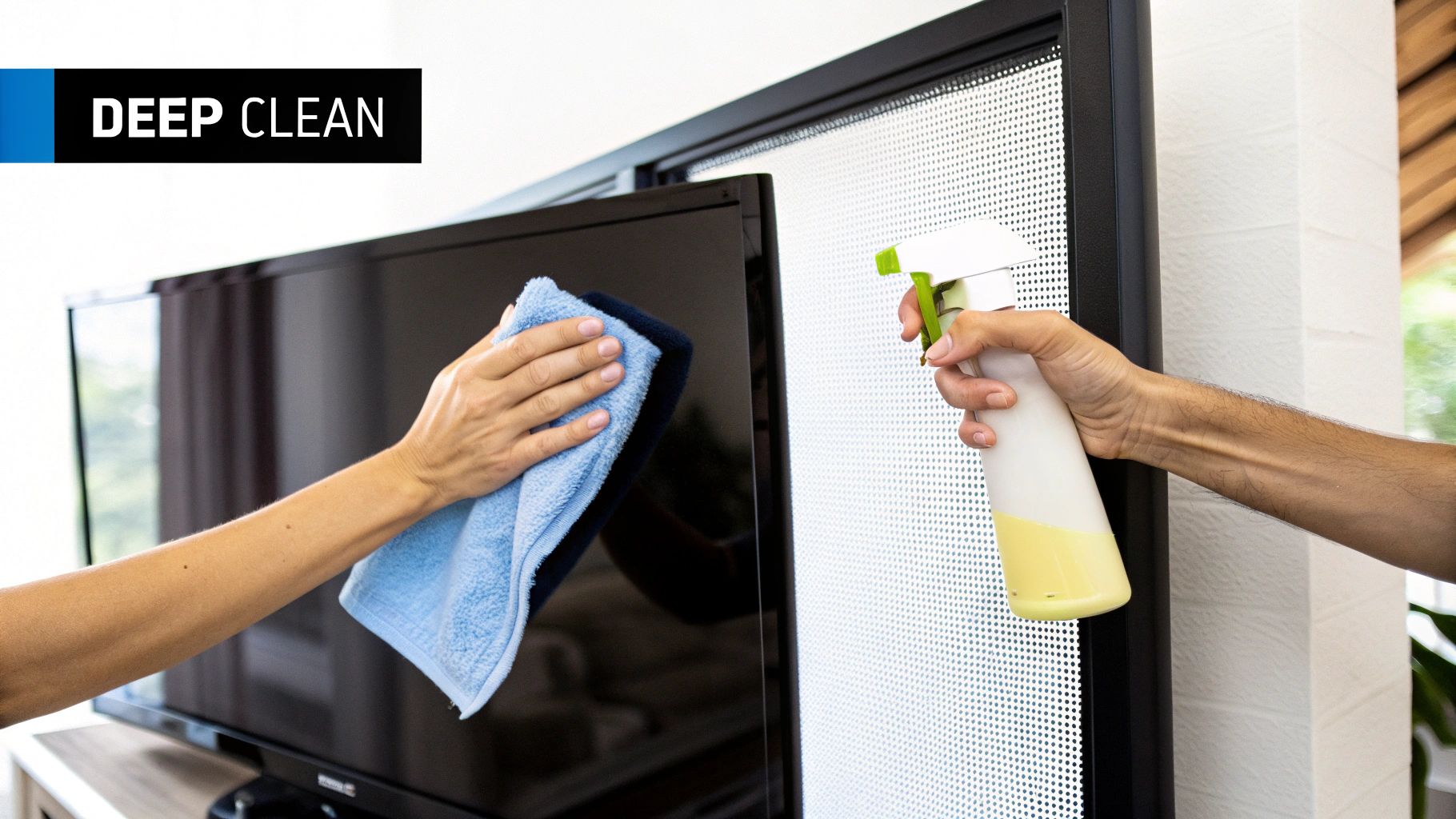
Turning grimy security screens into sparkling clean protectors is simpler than you might think. This comprehensive guide offers a step-by-step approach, honed through years of professional cleaning experience at XL Security and Blinds. We’ll guide you to a professional-level clean, covering everything from initial preparation to final inspection, ensuring your screens look and function optimally.
Preparation Is Key: Setting the Stage for Success
Before starting the cleaning process, proper preparation is crucial. This not only safeguards your surrounding areas but also streamlines the cleaning itself. Begin by covering nearby furniture, walls, and landscaping with drop cloths or old sheets. This prevents cleaning solutions from inadvertently damaging these surfaces. Then, remove loose debris like leaves, cobwebs, and dust from the screens. A soft brush, a leaf blower on a low setting, or a vacuum with a brush attachment can effectively handle this preliminary cleaning.
Cleaning Solutions: Choosing the Right Formula
Once your area is prepared, the next step involves selecting the appropriate cleaning solution. While commercial cleaners are readily available, a simple and effective solution can be easily mixed at home. Warm water and mild dish soap generally work well for most screen types. However, specific materials, such as aluminium or stainless steel, may benefit from specialised cleaners. Always test any new cleaner on a small, inconspicuous area first to check for compatibility. When it comes to window screens, particularly in Australia where 51.05% of homes have security screens, the correct cleaning method is essential. This involves removing loose debris, applying a mild detergent and water solution, gentle scrubbing, and thorough rinsing.
The Cleaning Process: A Step-by-Step Guide
Now for the core cleaning process. Follow these steps for a thorough and effective clean:
- Apply the cleaning solution: Using a sponge or soft-bristled brush, apply the cleaning solution to the screen, working from top to bottom for complete coverage.
- Gentle scrubbing: Gently scrub the screen using a circular motion, focusing on areas with stubborn grime. Avoid excessive force, as this could damage the screen.
- Thorough rinsing: Rinse the screen completely with clean water, ensuring all traces of the cleaning solution are removed. A garden hose with a spray nozzle works perfectly.
- Final inspection: After the screen dries, inspect it for any remaining dirt or streaks. Repeat the cleaning process in specific areas as needed.
Addressing Stubborn Stains: Targeted Solutions
Sometimes, standard cleaning isn’t enough to remove stubborn stains. Hard water stains, for example, can be particularly difficult. A mixture of equal parts white vinegar and water can effectively dissolve mineral deposits. For mold or mildew, a diluted bleach solution can be used, but always test it in a small, hidden area first to prevent damage to the screen material. Rinse the screen thoroughly after using any specialized solution.
Drying and Final Touches: Ensuring a Spotless Finish
After rinsing, let the screen air dry completely to avoid water spots and ensure a streak-free finish. Finally, perform a last inspection to confirm your efforts have resulted in clean, protected, and pristine security screens. By following these steps, you can maintain the appearance and performance of your security screens for years to come. For any questions or specialised assistance, contact the experts at XL Security and Blinds.
Environment-Specific Maintenance: Tailoring Your Approach
Just as different climates require specific landscaping approaches, your security screens demand tailored maintenance based on their surrounding environment. Understanding your local conditions is the first step towards effective upkeep. Let’s explore how various environments necessitate unique cleaning strategies for optimal security screen protection.
Coastal Considerations: Combating Salt Corrosion
Coastal living presents unique challenges. Salt spray and humidity create a highly corrosive environment, increasing the susceptibility of screens to rust and deterioration. Salt accumulation, for instance, can quickly degrade metal screens if not addressed promptly. Therefore, more frequent cleaning is essential in coastal areas.
This means coastal homeowners should implement specific cleaning techniques. Rinsing screens with fresh water after storms or high tides helps remove corrosive salt residue. Applying a protective sealant designed for coastal environments adds another layer of defense against these elements.
Urban Environments: Tackling City Grime
Urban areas, while less harsh than coastal regions, present their own set of difficulties. Industrial pollutants and vehicle emissions contribute to grime build-up on security screens. Over time, this affects both their appearance and functionality.
Urban dwellers should, therefore, prioritise regular cleaning. A mild detergent and water solution, combined with a soft-bristled brush, is usually sufficient. For persistent grime, a stronger cleaning solution may be necessary, ensuring compatibility with the screen material.
Rural Residences: Managing Dust and Debris
Rural environments bring distinct challenges, often involving agricultural dust, pollen, and organic debris. This build-up can clog screens, reducing airflow and overall effectiveness. Pollen, especially during allergy season, requires specific cleaning attention.
Rural homeowners should develop strategies for managing this organic accumulation. Regular brushing, along with periodic washing with a mild detergent, helps maintain clear screens. Adjusting cleaning schedules to coincide with local pollen seasons also improves maintenance effectiveness.
Tailoring Your Cleaning Schedule
Consistent cleaning is key, regardless of location. However, the frequency depends on the specific environment. To help guide you, we’ve compiled a table summarising recommended cleaning schedules based on environmental factors.
Cleaning Frequency by Environment
Recommended cleaning schedules based on environmental exposure factors
| Environment Type | Recommended Cleaning Frequency | Special Considerations | Warning Signs |
|---|---|---|---|
| Coastal | Monthly | Rinse with fresh water after storms; apply protective sealant | Salt build-up, corrosion |
| Urban | Every 3-6 months | Use a mild detergent solution; address persistent grime with appropriate cleaner | Visible grime, reduced airflow |
| Rural | Every 3-6 months | Brush regularly; adjust cleaning schedule during pollen season | Pollen accumulation, clogged screens |
This table provides a general guideline. Adjust your cleaning schedule based on your specific observations and circumstances.
Modern security screens are designed for low maintenance. However, regular cleaning is still crucial to prevent dirt and grime buildup, which can compromise their quality. In coastal and industrial environments, monthly cleaning is recommended due to salt and pollutants. Areas with milder conditions may only require cleaning every three to six months. By understanding the environmental impacts and tailoring your maintenance approach, you can keep your security screens in top condition, maximising their lifespan. Consulting professionals, such as XL Security and Blinds, can provide expert guidance for your specific environment and screen type.
The Integrated Approach: Windows and Screens Working Together
Cleaning your security screens involves more than just the screens themselves. For truly sparkling results, consider an integrated approach that tackles your entire window system—both the glass and the security screen—in one seamless process. This maximises efficiency and ensures a uniformly clean outcome. This section examines the advantages and limitations of different cleaning approaches to help you find the perfect workflow for your setup.
In-Place Cleaning vs. Screen Removal: Weighing Your Options
There are two primary methods for cleaning security screens: in-place cleaning and screen removal. In-place cleaning involves cleaning the screens while they remain attached to the windows. This method is generally faster and more convenient, especially for screens that are difficult to remove. However, it can be challenging to thoroughly clean hard-to-reach areas between the screen and the window glass.
Screen removal, on the other hand, allows for more thorough cleaning of both the screens and the windows. Detaching the screens provides complete access to both surfaces, eliminating trapped dirt and grime. However, this approach is more time-consuming and might not be feasible for all window types or screen installations. There’s also a small risk of damaging the screens during removal or reinstallation.
Bridging the Gap: Cleaning Between Screen and Glass
One common challenge is cleaning the space between the security screen and the window glass. For in-place cleaning, specialized tools like slim, flexible brushes can be invaluable. These tools can navigate the narrow gap, dislodging dust and debris without damaging either surface.
If you’re removing your screens for cleaning, take advantage of the unobstructed access. Use a soft cloth and an appropriate cleaning solution to wipe down both the window and the back of the screen. This ensures complete cleanliness and prevents cross-contamination. Cleaning the window first, then the screen, prevents transferring dirt back onto the clean glass.
Streamlining Your Process: Multifunctional Solutions and Sequencing
Maximize efficiency by using multifunctional cleaning solutions that are effective on both glass and screen materials. This eliminates switching between different products, saving time and simplifying the process. Also, consider your cleaning sequence. Cleaning the windows before the screens prevents dirt from splashing onto the glass.
Cleaning security screens regularly removes dust, allergens, and other pollutants, improving indoor air quality. Clean windows and screens also allow more natural light into your home.
Streak-Free Success: Professional Techniques for Sparkling Windows
Achieving streak-free results requires the right cleaning solution, proper technique, and high-quality tools. Microfiber cloths are excellent for cleaning windows because they’re highly absorbent and leave a lint-free finish. When applying cleaning solution, use a smooth, overlapping motion, working from top to bottom to prevent streaks. Dry the windows thoroughly with a clean, dry microfiber cloth or a squeegee for a sparkling shine.
Adapting to Your Setup: Customised Workflows
Different window configurations and screen mounting systems may require specific cleaning methods. Sliding windows, for example, may allow easy screen removal, while fixed windows might necessitate in-place cleaning. Different screen mounting mechanisms also require varied approaches. Always refer to your manufacturer’s instructions for guidance on removing and reinstalling your specific security screen type. By tailoring your approach to your unique setup, you can achieve optimal results and minimise the risk of damage. C
Contact XL Security and Blinds for professional advice on cleaning and maintaining security screens.
Troubleshooting Stubborn Cleaning Challenges
Maintaining your security screens goes beyond routine cleaning. Sometimes, stubborn grime presents a real challenge. This section explores professional techniques for tackling those persistent issues that can plague even the most diligent homeowner. We’ll cover how to combat mineral buildup, mold, insect residue, and even the first signs of oxidation, ensuring your security screens stay in top condition.
Conquering Mineral Buildup: Descaling For Success
Hard water stains can be a persistent problem, leaving unsightly mineral deposits on your security screens. Left untreated, these deposits accumulate and become increasingly difficult to remove. Thankfully, effective descaling methods can restore your screens’ shine without causing damage.
For minor mineral buildup, a simple solution of equal parts white vinegar and water can be very effective. Spray the solution on the affected areas and let it sit for a few minutes to dissolve the minerals, then rinse thoroughly with clean water. For heavier mineral deposits, a commercial descaling product specifically designed for your screen material might be necessary. Always test any new cleaning product on a small, inconspicuous area first to check for compatibility.
Tackling Mould and Mildew: Sanitising Safely
Mould and mildew can be a health hazard and detract from your screens’ appearance. Addressing these issues quickly is crucial, but it’s important to sanitize without harming the mesh. A diluted bleach solution (one part bleach to ten parts water) can be effective, but always test it cautiously in a hidden area first, as bleach can discolour or weaken certain materials.
For a gentler option, consider using a mixture of water and white vinegar. Vinegar’s natural acidity helps prevent mold and mildew growth. Maintaining proper airflow around your screens can also prevent future growth by reducing moisture buildup.
Removing Insect Residue: Gentle Yet Effective Methods
Insects, especially during warmer months, can leave stubborn residue on security screens. This residue can be tough to remove with regular cleaning. Soaking the affected areas with warm water and mild dish soap can soften the residue, making it easier to remove with a soft-bristled brush.
For more difficult cases, a paste of baking soda and water can provide gentle abrasion to lift the residue without scratching the screen. Apply the paste, let it sit for a few minutes, and then gently scrub with a soft brush. Rinse thoroughly with clean water afterwards.
Restoring Neglected Screens: A Staged Approach
Severely neglected screens, caked with years of accumulated grime, demand a more intensive cleaning process. A staged approach is often necessary. Begin by removing loose debris with a brush or vacuum. Next, apply a degreasing cleaner to break down stubborn dirt and grime. Let the cleaner sit for the recommended time before scrubbing with a soft brush. Rinse thoroughly and repeat if necessary. Regularly cleaning security screens helps remove dust, allergens, and other pollutants, improving indoor air quality. Clean windows and screens also allow more natural light into your home.
Addressing Oxidation and Corrosion: Preventing Long-Term Damage
Identifying and addressing the early signs of oxidation and corrosion is essential for prolonging the life of your security screens. Rust spots on metal screens, for instance, should be treated immediately with a rust remover appropriate for the specific metal. Regularly applying a protective coating can help prevent future corrosion, particularly in harsh environments.
For professional assistance and customised solutions for your Crimsafe security doors and windows on the Gold Coast, contact the experts at XL Security and Blinds.

